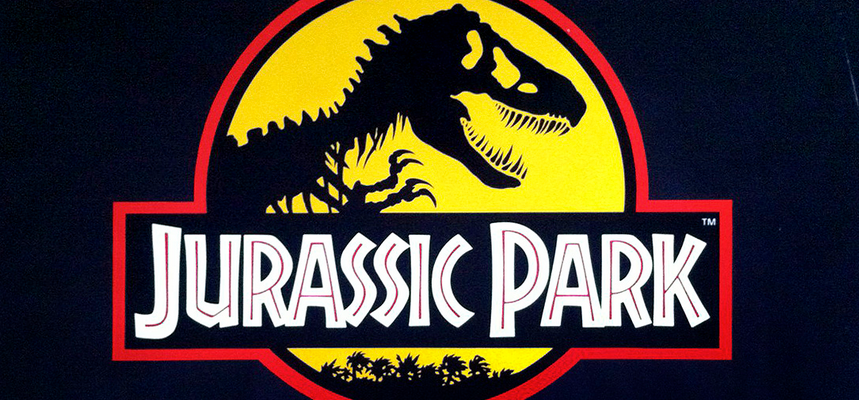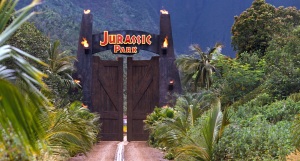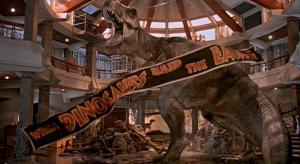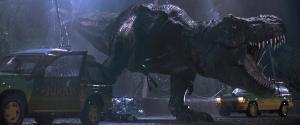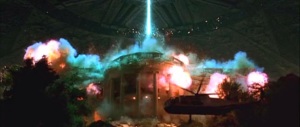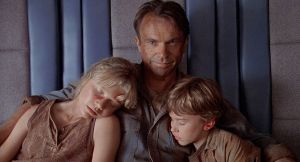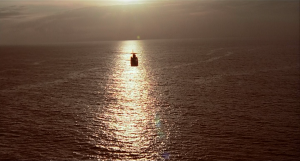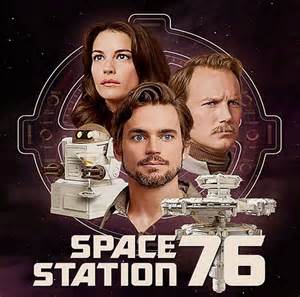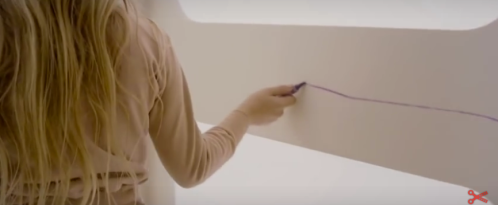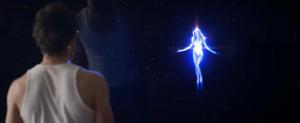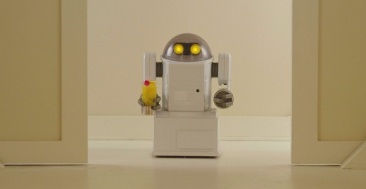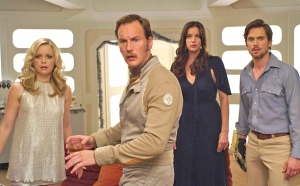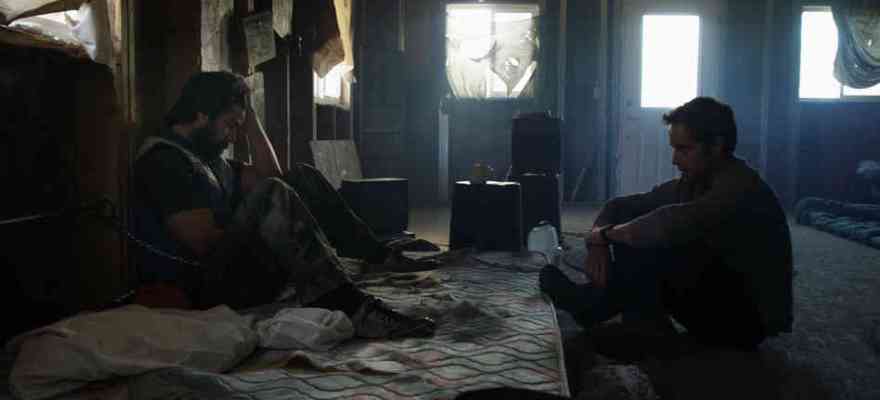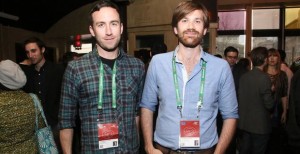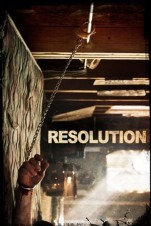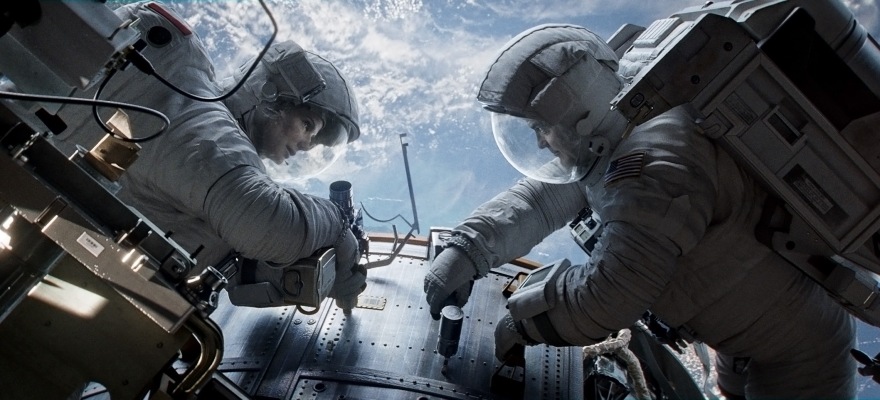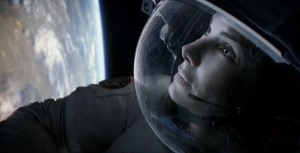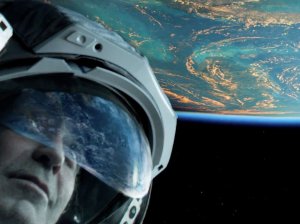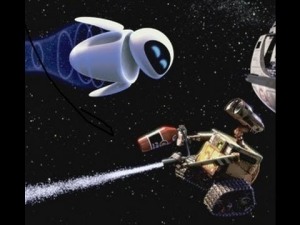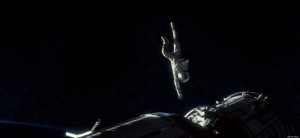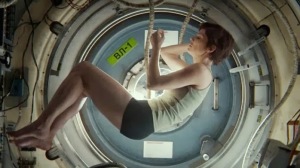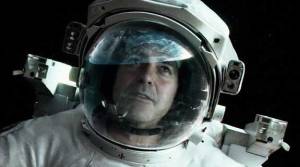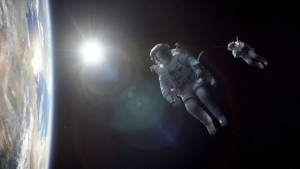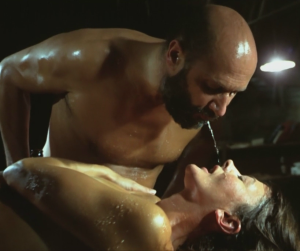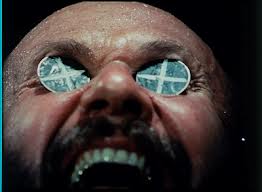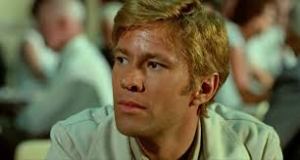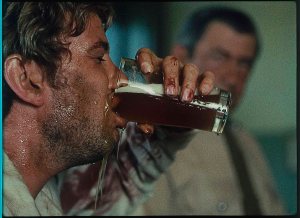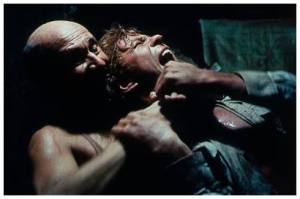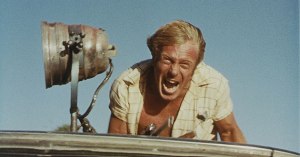Over a hundred years of cinema history and people still ask “what is your favorite movie?” as if it’s nothing but mindless chit-chat or a way to break the ice on a first date.
The question drives cinephiles crazy because it should be impossible to answer, but the truth is everyone who loves movies always knows their answer. Maybe they keep a rotating list of five or ten so they can switch it up at a party and seem smarter/funnier/cooler/sexier than they really are, but in your heart of hearts you only have one answer, no matter how dumb or pretentious or pop.
I’ve known my answer since 1993, when I was watching TV cross-legged on the living room floor and a commercial for Jurassic Park changed the course of my entire life.
The things that came after — leaving Washington State for Los Angeles, ridiculous amounts of school debt, ten plus years of struggling to make rent as an underpaid production assistant on such gems as Ninja Cheerleaders — weren’t a reality yet. In the spring of 1993 the whole of life was just a twelve-year-old boy experiencing joy to a degree he didn’t know was possible, leaping off the carpet and running through the house yelling and leaping in big arcs like a maniac.
Nostalgia distorts this moment into a perfect movie scene. My mother’s potted plants draped beside the television like jungle vines. Floating dust highlighted streaks of sunlight from the windows. The shot of a t-rex in a side view mirror infused me with adrenaline and propelled me weightlessly down the hall.
Retrospect is what reminds me of the bemused look on my father’s face and the frustrated confusion from my grandmother — who was in the late stages of Alzheimer’s — as she tried to wrap her mind around the quivering, wide-eye little geek who wanted desperately for her to share his enthusiasm.
With her disease this was just one of many times this scenario played out, though it’s the one that sticks with me the most. The uncrossable distance between us was of course age and dementia, made worse by my chaotic rambling, but in truth that same disconnect was always present when I tried to talk to others about movies, stories, and art.
Like everyone who identifies with so-called “geek culture” it was late night zombie movies and Mystery Science Theater 3000 that called to me as a child. Though I was raised blue collar, movies and TV were never a reward at the end of the day for a job well done, they were simply everything that I cared about and consumed my mind every waking hour.
I feel like lots of people care about the rules of prose, but few look at film and television as a sort of language and try to process what they’re watching on any kind of critical level. But I always learned best through story. And given that I was homeschooled up until I went to college, I had an enormous amount of free time to watch movies and television.
As a result, I thought in movie shots. I intuited film grammar from an early age and could pick out jarring edits before I could knew what to call them (the first time I learned about “crossing the line” I was so excited that I wasn’t the only freak who cared about these things!).
My parents tell stories of me pausing a movie, standing up in front of my friends, and getting angry at them for not understanding what the scene was really about. When it came to movies I could find lots of folks who enjoyed them, but no one who understood them or why they were so important.
It was a seemingly impossible divide, whether with peers or my aging grandmother.
That film obsession came to a head with Jurassic Park. From the opening THUD of brand new surround sound technology, that entire theater was as reverent as a church, faces forward, minds and souls open to whatever flashed on screen.
When I walked out of the theater, my life had changed. I’ve experienced religious and romantic and self-induced highs in my life since, but I’ll be damned if that brightly-colored dino thriller didn’t match them all in its own way.
I’ve read a lot about the incredible audience reactions to Star Wars and Jaws — two movies I adore but was too young to experience in the theater — but the awe in the cineplex for Jurassic Park was stunning, and all I knew was that I had to see the movie as many times as possible.
Every day I scanned the newspaper until I found the t-rex skeleton logo in the movie listings whenever the film played at the local second-run theater.
Luckily, tickets at The Liberty were about a buck, so it was possible to scrounge up enough loose change during a long summer day, pillaging couch cushions and scouring the parking lot of our apartment complex.
After the third or fourth viewing, when those jeeps stopped in the rain my friends and I would rush through the aisles into the lobby and up the stairs to the bathroom where we’d watch the mirror shake as the t-rex approached, our reflections quivering like those famous cups of water.
Soon I had every line memorized and once recited the film beginning to end, complete with proper inflection, gestures, and dramatic pauses, totally unaware that my infatuation was inadvertently preparing me for a future career in screenwriting.
About the time I placed my first ever pre-order for the VHS release in October of ’94 (a mind-blowing new concept at the time), my parents got word that they lost their job.
They managed our apartment complex, but that task was being farmed out to a nation-wide leasing company. And since part of their salary included free housing, this also meant we were out of a home. They quickly lined up another management job with onsite housing, but it was still under construction and way behind schedule.
Luckily, my folks had recently purchased a tiny piece of wooded property near the town of Elma, Washington. It was intended as an investment, but we now found ourselves living in the woods on an indefinite vacation.
Days were spent fishing and swimming and riding bikes on dirt trails. After dark we’d play cribbage and UNO around the campfire while my father read aloud from the highbrow works of Patrick McManus, and we’d close out the evening listening to Jim French on the KIRO Mystery Playhouse.
But evenings grew colder and the weather got worse. Nighttime in my tent brought the sounds of creaking trees that reminded me of dilophosaurus calls, the thunder in the hills of a hunting t-rex. And after a while, imagination gave way to worry.
Slowly it dawned on me that my family was essentially homeless. The daytime fishing trips weren’t just fun, they were functional, producing many of our dinners. Suddenly the nighttime trips to the local Lake Arrowhead Community Clubouse to take showers seemed less adventurous.
Finally October rolled around and my parents drove me to Suncoast Video to pick up my VHS of Jurassic Park. We had no television, let alone a VCR, so it lived in my tent safely under the pillow, where I’d pull it out and study the case with a flashlight.
I memorized the crew listed on the front, the still images from the movie printed on the back, and I’d project the entire movie in my own mind. Lips whispering dialog, visualizing every edit, until we moved into our new home where I could finally press play.
The mid-‘90s were a watershed time for cinema, often overlooked. The end of New Wave in the late ‘70s lead to the corporate blockbusters that we still see today, and in many ways Jurassic Park marks a more subtle cinematic shift from personal to impersonal blockbusters.
Just look at the other top-grossing adventures and thrillers for 1993: The Fugitive, The Firm, Indecent Proposal, Cliffhanger, and The Pelican Brief. They have varying degrees of budget but all of them share a very personal scope that we rarely see these days. They are movies about one person or a small group fighting for survival.
The next year brought us True Lies and Speed and Clear and Present Danger, all “small stakes” blockbusters in their own way, but steadily growing larger. And then in 1995 we got the return of James Bond with Goldeneye and the end-of-world scope of Waterworld.
But the tide turned in 1996 with Independence Day, where old-school flying saucers threatened to destroy the whole of Earth.
The next year brought us The Lost World, where Spielberg’s dinos set foot in San Diego and destroyed the surrounding architecture, and then in 1998 — with the trifecta of Armageddon, Godzilla, and Deep Impact — mainstream Hollywood movies officially shifted to the so-called “disaster porn” that we see so much of today.
Compared to what we get now with D.C.’s heroes demolishing entire cities and Marvel flicks threatening the destroy the known universe, Jurassic Park’s simple little story about a handful of people trying to escape an island and save their own lives seems almost quaint.
And yet it holds up surprisingly well.
The film industry may have evolved, but Jurassic Park remains a perfect specimen in the fossil record. At over 800 million dollars in 1993 (more now thanks to inflation and the 3D re-release), it was at the top of the boxoffice food chain.
Sure it owes a lot of its success to the groundbreaking VFX, but more than that it was a primal little story about the importance of living and re-producing. Remember that life finds a way not only through gender-bending dinos but also Alan Grant’s eventual acceptance of children, shifting him from a lone hunter to a nurturing father figure.
In this way he survives not only the dangerous Isla Nublar but his own evolutionary cul-de-sac of personal growth. By protecting the next generation, he’s no longer obsolete.
As a kid I didn’t think much about why I was so obsessed with Jurassic Park. It had sci-fi dinosaurs and I was a teenage boy, enough said. It just made perfect sense to spend days daydreaming about it, to re-read the book until the cover fell off, to sleep with the VHS cassette under my pillow.
But thinking back on our lives in the Fall of ’94, when the campfire wasn’t just about roasting marshmallows but also about keeping us warm, I realize that it was really all about our survival.
A well-made blockbuster will hit the pause button on your life, allow your mind to soar, and help you connect the dots of a much larger picture. There’s a reason Hollywood was dubbed a “dream factory.” Well-made big-budget Hollywood fare is a salve for the subconscious, working just like dreams to help you process the real concerns of life.
When I decided to move to Los Angeles and make movies, like so many others I tried my hand at esoteric art films and preachy independent dramas that mistook earnestness for drama. It took a while to shed pretension and understand that creating or enjoying escapism doesn’t need to be mindless and is in fact essential to how we function as people.
For me, Jurassic Park is more than fun dialog, incredible special effects, and the stunning wonder of dinosaurs. It’s about heroes who used their brains and wit and could still barely survive.
Their noble achievement was to keep going, endure, and just get out of that damn jungle. Just how, in the end, my family made its own way out of the forest. In a world of hungry beasts and violent storms, we found a way.
